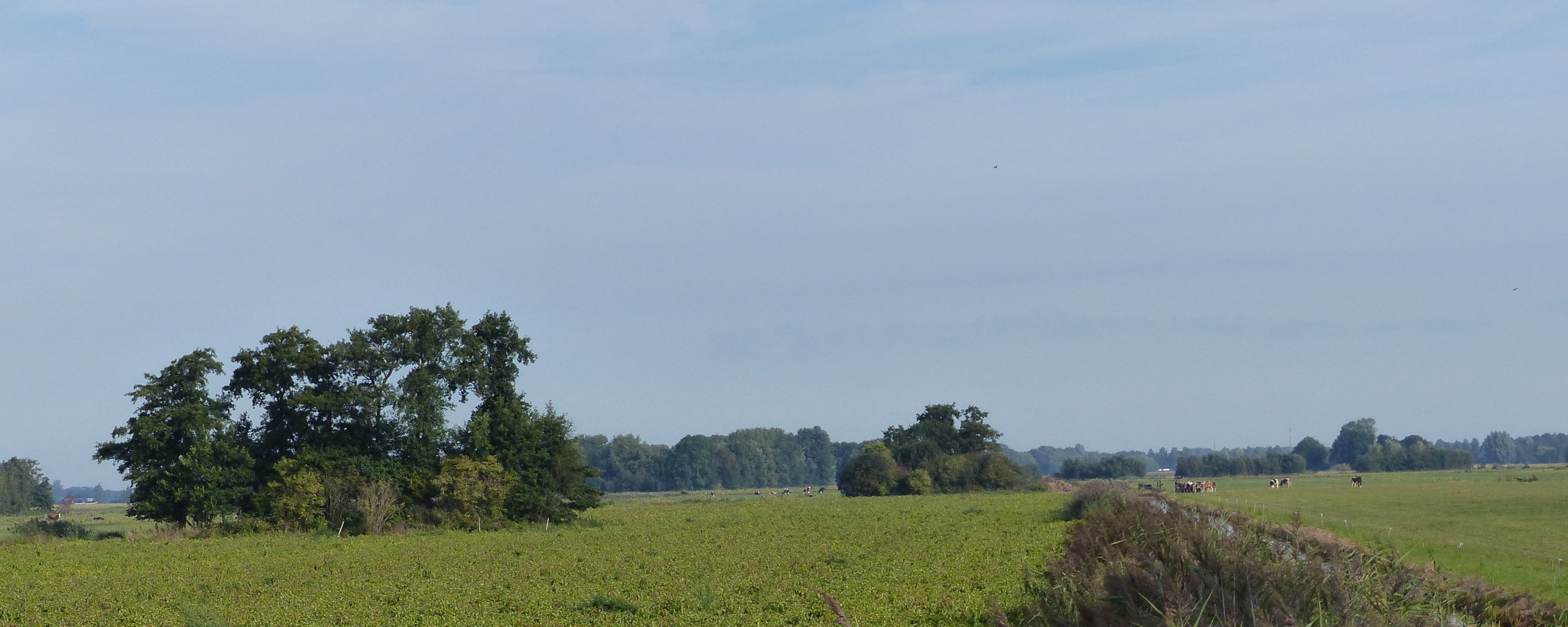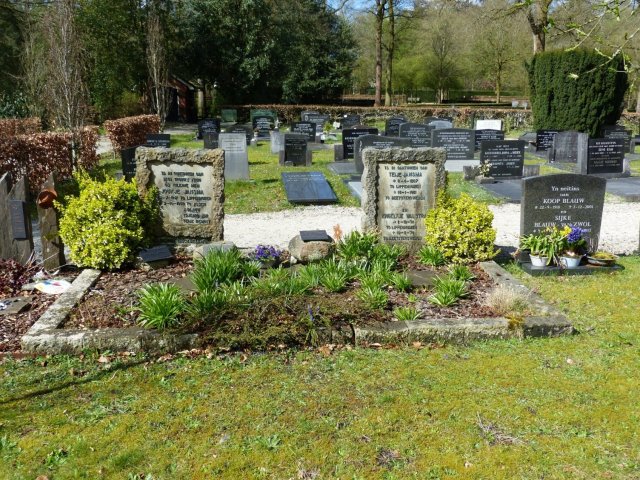
Gorredijk Hegedyk
Around 1600, when the peat north of Kortezwaag was reclaimed, the Hegedyk near Gorreveen was dug through to drain the peat that had been extracted and to dewater the peat. At the junction of the canal and the road a bridge was built in 1630. This was the beginning of the emergence of "vlecke" Gorredijk.
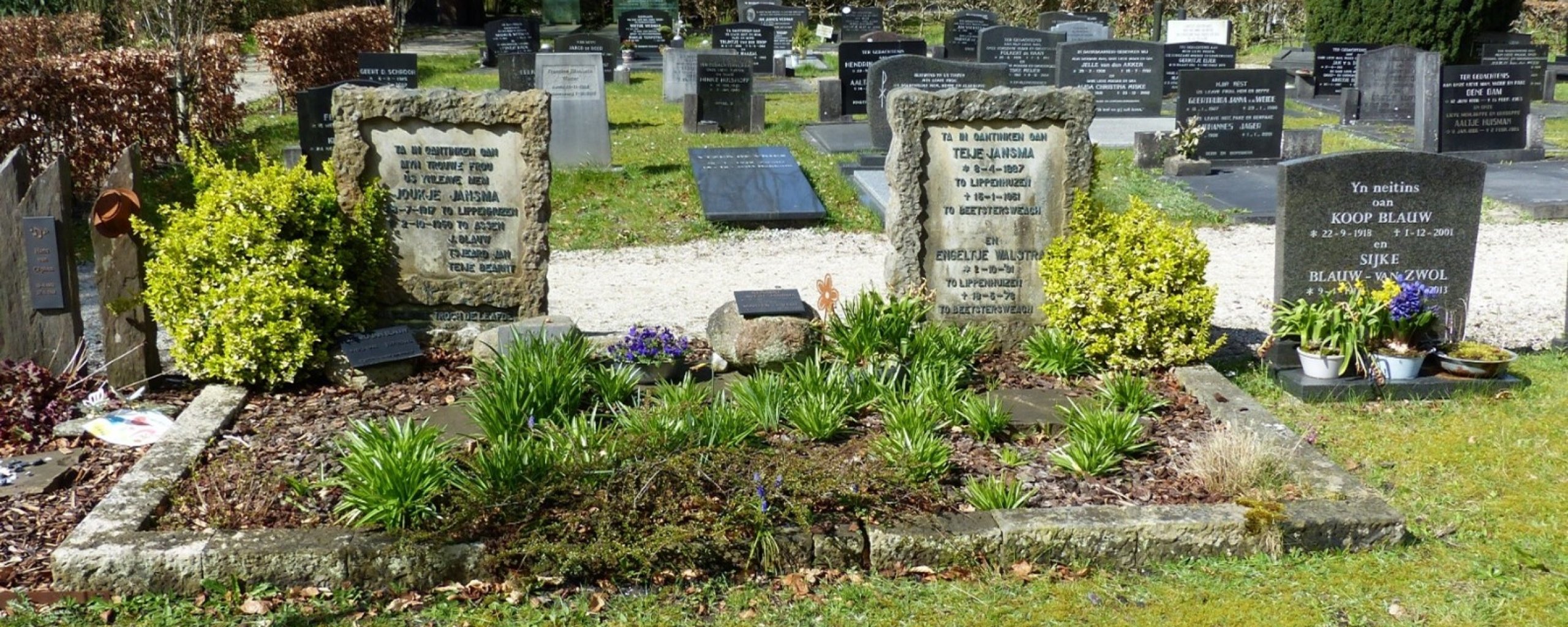

Craftsmen and merchants settled around this junction. Gorredijk developed into a transit port of peat and trade center. It also gained a supply function for the surrounding area. In the second half of the seventeenth century, Gorredijk also became of strategic importance and in 1672 an entrenchment was built. The existing habitation came to lie within this entrenchment. A reformed church was built within the entrenchment, where the cemetery on Kerkewal is now located.
In 1735 and 1877 the reformed church of Gorredijk was rebuilt and enlarged. The church was located a bit away from the houses. In 1830 Gorredijk did not need to build a new cemetery because the church was located a little further away from the houses. Some of the inhabitants were buried at the Kortezwaag cemetery. Around 1927 a new municipal cemetery was established on the Hegedyk. The churchyard on the Kerkewal was also used for burials for a long time. In 1984 the church building was demolished because it was in poor condition. Repair was too expensive. It eventually led to closure of the cemetery. Part of the walls of the church can still be seen. In addition to the municipal cemetery on the Hegedyk, both the churchyard on the Kerkewal and the Kortezwaag cemetery became property of the municipality.
Hegedyk Municipal Cemetery
In 1909 it became clear that a new cemetery was needed, because there was no more room in the churchyard on the Kerkewal. There was no room to expand the Kortezwaag cemetery, so it was decided to look for a piece of land just outside Gorredijk. The piece of land where they wanted to establish the cemetery belonged to the parsonage property of the reformed church of Kortezwaag. The size was 1.75 hectares. On old Maps it can be seen that at this location or nearby there was also an 'old kerckhof' before.
In 1925, the first design was made for Gorredijk's General Cemetery by architectural c.q. municipal architect Christiaan van Wamel (1890-1953). The General Cemetery on the Hegedyk was founded in 1927. The drawings of the design were made in 1929. The pond made it an unusual design for the time. Behind the central entrance were paths around a round pond. Behind it, a little higher up, was a field with space for 456 graves. These were divided into eight sections. Central at the end of the main path was a bier house. The burial ground was raised with the excavated soil from the pond. Because the burial grounds were higher than the path, a staircase of expressionist-style brick was built. The stairs have an outward curving brick balustrade. The cemetery was opened on July 19, 1929.
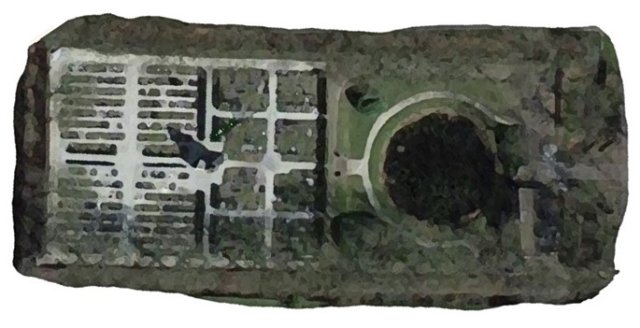
In late 1941, Municipal Works made a proposal for expansion to the Board of Mayor and Aldermen. The goal was to create another 476 graves, divided into four sections. In 1942, the cemetery was expanded at the rear. This space had already been taken into account during the construction of the first section. However, the occupying forces decided to halt the expansion. In 1946, the expansion was completed. The bell house then came to be located in the middle of the cemetery. The expansion was also a design by Van Wamel. In 1947, the first grave in the new section was inaugurated.
The bell house is now in use as a repository for cemetery maintenance tools. The bell house was also designed by Christiaan van Wamel. It was built in 1928 in a building style related to expressionism. In 1950, the bier house was extended at the rear in the same material. In the tower hangs a swinging bell from 1952, made by well-known clockmaker Jacobus van Bergen from Midwolda. This replaced an eighteenth-century bell by Cyprianus Crans of Enkhuizen, from Hemrik, which was confiscated by the occupiers in 1943. On May 5, 1946, a monument to all civilian victims, resistance fighters and soldiers in the service of the Dutch Kingdom between 1940-1945 was placed directly behind the entrance. The designer was Nicolaas van der Kreek (1896-1967).
By 1963, most of the graves were occupied. There were plans to expand again. Eventually an expansion of the Kortezwaag cemetery was chosen. In 1975, plans were made for a funeral home.
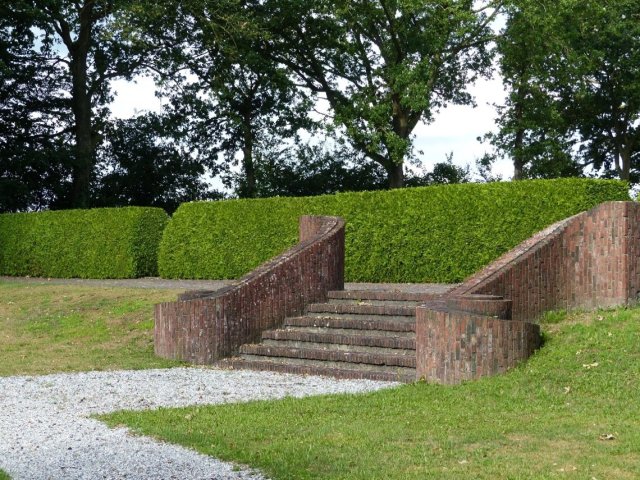
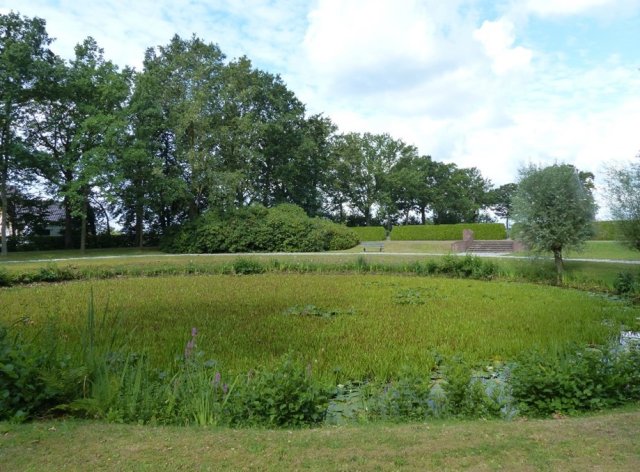
Location in the landscape
Little was changed in terms of appearance and urban design. Along the Hegedyk, several new detached houses were built between the older houses. In the 1960s, a new housing estate was built on this side of Gorredijk. On the southern side of the cemetery, the Hans de Jongwei was constructed. The cemetery is larger than 1 hectare. Half of it has graves, the other half a pond, paths and funeral home. From the Hegedyk, the cemetery looks like a park, especially because of the large pond. The cemetery lies just within the Gorredijk Kom zoning plan. The plots around it have an agricultural destination and fall under the Zoning Plan Buitengebied.
Construction and green aspects
The circular pond plays an important role within the design. Around the pond, and at the front around the war memorial, low evergreen shrubs are planted. The layout of the grounds is symmetrical. Around the pond and the oldest part with the eight sections is a walking garden with shell paths. There are pollard willows along the paths. The oldest drawings of the designs show two variants for the planting. The plantings have been renewed over the years. The layout of the front garden is still recognizable, but the symmetry has been broken by the construction of a funeral home. In both corners between the pond and cemetery is a wide stretch of rhododendrons.
A few yew trees around the pond are still part of the original planting. In the past, the oldest section of the cemetery was separated from the front section with the pond by a tall, double yew hedge. The center of the old section also had a trimmed yew. The middle section on the extension had a yew hedge. Part of it is still there, but is now a low hedge. This provides more visibility throughout the cemetery.
The oldest part of the cemetery consists of eight lawns of graves divided by shell paths. The grave fields are covered with grass. The newer section consists of four flowerbeds with rows of graves in the grass and narrow shell paths between them. At the border of the walking garden and the cemetery is a conifer hedge. There used to be conifers at the intersections. The greenery in the cemetery is now maintained somewhat less extensively than at the beginning of the century. The state of maintenance is good.
The cemetery, the entrance gate and the belfry (bierhuis) are national monuments. They were designated a national monument on May 17, 1999 (number 513155) and entered in the national monument register on September 14 of that year. The piece of expansion that the barracks received in 1950 does not fall under the national monument because it is not old enough. The construction of the municipal cemetery and steps is of general cultural-historical and landscape value due to the good quality of the design. A simple, yet evenly laid out cemetery, in the style of the Amsterdam School, is rare within Friesland and is therefore protected.
Typology of grave monuments
It is likely that many grave monuments have already disappeared or been replaced. As a result, grave culture has taken on a more mixed appearance. From the beginning, few hardstone tombstones have been placed. But there were, as old footage shows. In the period following the completion of the cemetery, grave monuments were mostly placed that are characteristic of a transitional phase. They were monuments with a more businesslike style and modern design, but sometimes still with old symbols. A number of striking grave monuments can also be seen on the extension. In this part of the cemetery, there are also younger grave monuments. They are made of unusual material or with an unusual shape, characteristic of the period after World War II. Although many grave monuments still contain all or part of hard stone, a variety of other materials are also present. Many different symbols can be seen.
Especially on the old part of the cemetery are grave monuments, which are interesting by design, material or symbolism. Also buried there are persons who were important for the history of Gorredijk and Kortezwaag in the twentieth century. The grave monuments are mainly of local genealogical importance and are not protected by the state.
